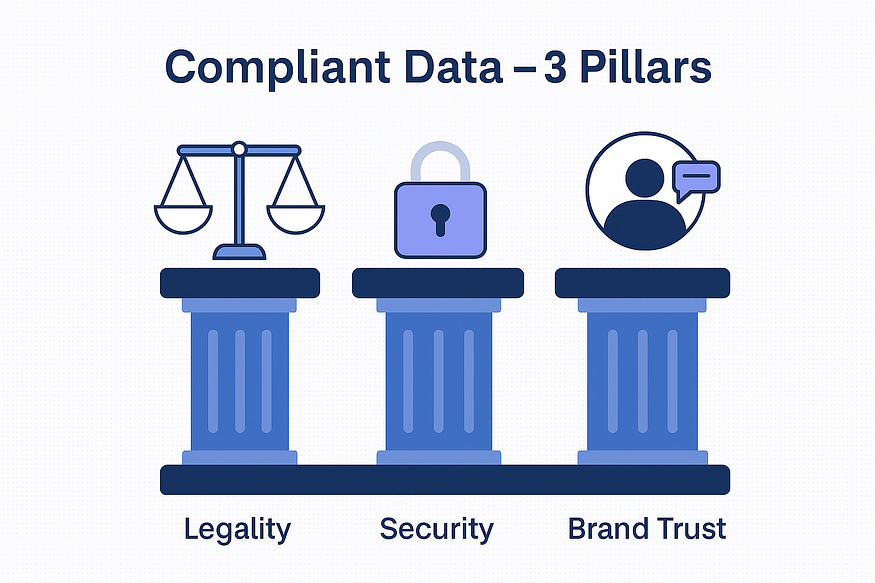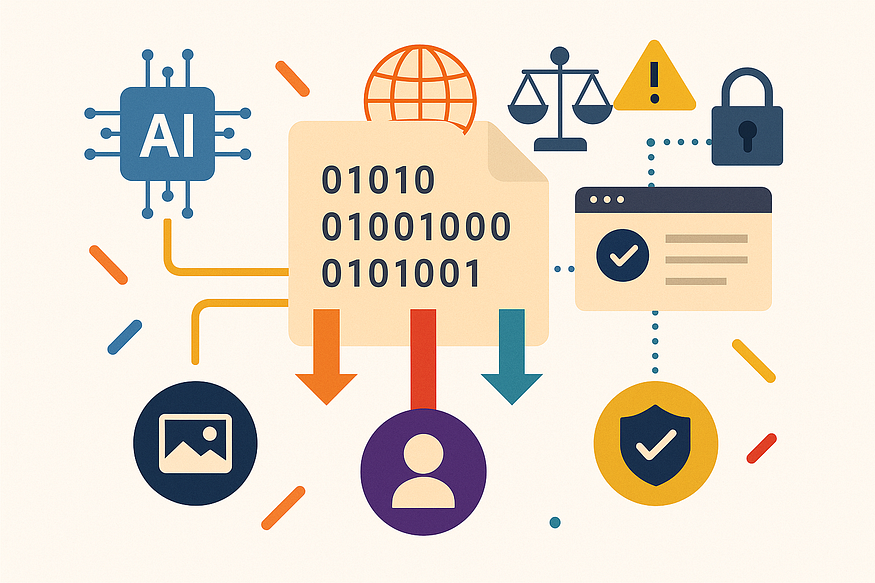
Data Compliance as the New Competitive Edge: Building a Trustworthy AI Training Chain
Generative AI is forcing companies to rethink what really matters in AI development. For a long time, the spotlight was on model performance — bigger models, more parameters, faster inference. But as copyright claims and regulatory scrutiny increase, the focus is shifting toward a more basic question: where did your training data come from, and are you allowed to use it? A clean, transparent, and auditable data pipeline is no longer a ‘nice-to-have’; it is becoming the foundation of commercially viable AI.
1. The Era of AI Data Accountability
In 2025, the U.S. Copyright Office released its Generative AI Training Report, noting that more than 40 cases had already been filed in the United States over the use of copyrighted works to train AI models. These cases involve publishers, photographers, authors, and even music creators. At the same time, the EU Artificial Intelligence Act (EU AI Act) requires high-risk AI systems to disclose the sources, ownership, and characteristics of the data used in training. Together, these developments signal a clear direction: AI training can no longer rely on opaque, scraped, or ‘found’ data.

2. A Practical Example: Transparent Training in Adobe Firefly
One of the clearer industry examples is Adobe’s Firefly family of generative AI models. According to Adobe’s public statements, Firefly is trained only on licensed content from Adobe Stock and on public-domain materials whose copyrights have expired. It does not train on customer-uploaded private content, nor on indiscriminately scraped web content. In addition, Adobe pays contributors whose stock content is used in model training. This creates a closed loop of ‘license → use → compensation’ and gives corporate users higher confidence that Firefly outputs are safe to use in marketing, advertising, or publishing scenarios.
Adobe also launched the Content Authenticity Initiative (CAI), which uses content credentials to record how a digital asset was created and edited. This aligns well with the EU AI Act’s preference for traceable and explainable AI outputs.
3. A Dividing Line in the AI Industry
Adobe is not the only player in this space, but its approach highlights an emerging split in the industry:
— Getty Images vs. Stability AI: Getty sued Stability AI for using more than 12 million copyrighted images to train Stable Diffusion. This case is widely viewed as a baseline challenge against unlicensed training data.
— The New York Times vs. OpenAI and Microsoft: the Times argued that GPT models reproduced its reporting and could be used as a substitute, causing economic harm. The case pushed the industry to confront the limits of ‘fair use’ in large-scale AI training.
— Anthropic vs. Authors Guild: Anthropic won an important ruling in mid‑2025 in which its model training was deemed sufficiently transformative. This shows that some courts may recognize AI training as fair use — but only under specific conditions.
Taken together, these cases show that companies that continue to train on unlicensed, unexplained data face legal and reputational risks, while those that invest in data transparency gain an advantage.
4. Why Data Compliance is Good Business
Data compliance is often framed as ‘legal hygiene’, but for AI it is also a growth strategy:
1) Commercial safety: enterprise customers — especially in advertising, media, and education — need assurance that the content they publish will not trigger copyright claims.
2) Brand and trust: in 2025, data ethics is part of brand identity. A model that can prove it was trained on licensed, consent-based data is easier to sell.
3) Ecosystem collaboration: once licensing and compensation are in place, it becomes easier to bring creators, stock platforms, and AI vendors into the same ecosystem.
4) Regulatory readiness: as AI regulation matures, models with auditable training data will be the first to pass procurement or compliance reviews.
5. From ‘Transparent’ to ‘Verifiable’
The next phase of AI governance will not stop at disclosure. Regulators, customers, and even creators will want proof. That means companies may need to add digital watermarks, blockchain-based provenance, or third‑party audits to their AI data pipelines. In other words, AI will move from ‘we promise this is clean data’ to ‘here is the evidence this is clean data.’

Conclusion: Lawful is the Floor, Trustworthy is the Goal
AI is moving from a period of rapid, experimental growth to one of structured, accountable innovation. In that environment, the most competitive AI companies will not necessarily be the ones with the largest models, but the ones with the cleanest data, the clearest permissions, and the strongest creator relationships. Data compliance is no longer a constraint — it is the new signal of quality.
Maadaa.ai Licensed Dataset
As the industry moves toward greater transparency and accountability, building AI on licensed and secure datasets is no longer optional — it’s essential.
To explore how responsible data practices can reshape the foundation of AI innovation, watch our in-depth video discussion:
Beyond “Data Scraping” — Building Responsible AI on Licensed and Secure Datasets



